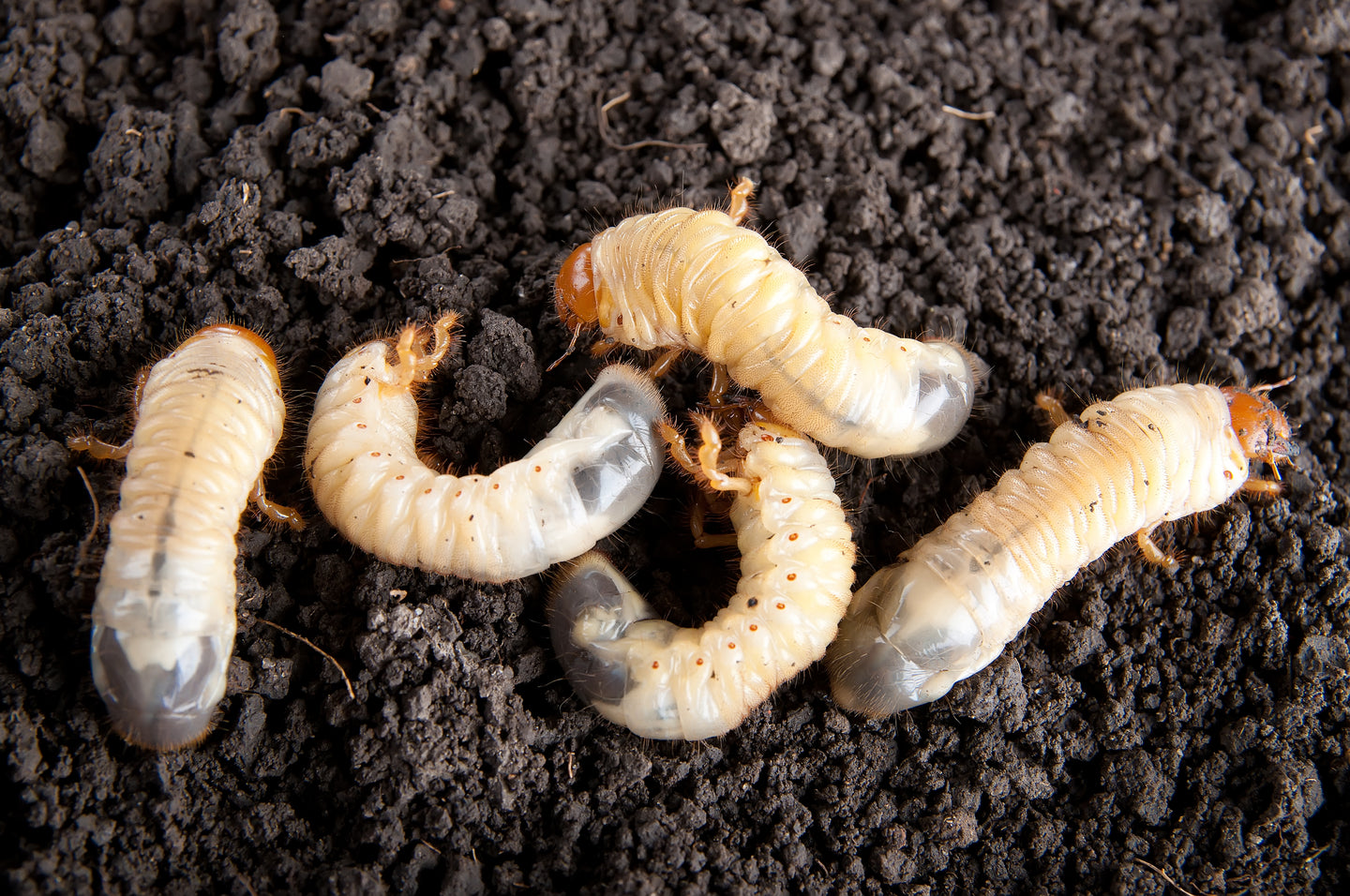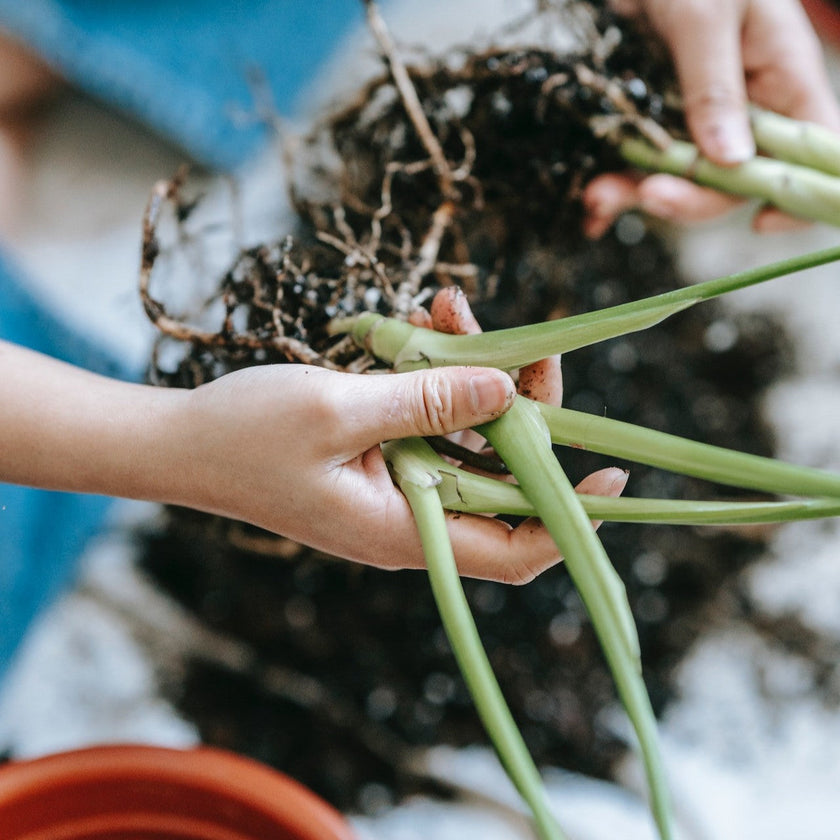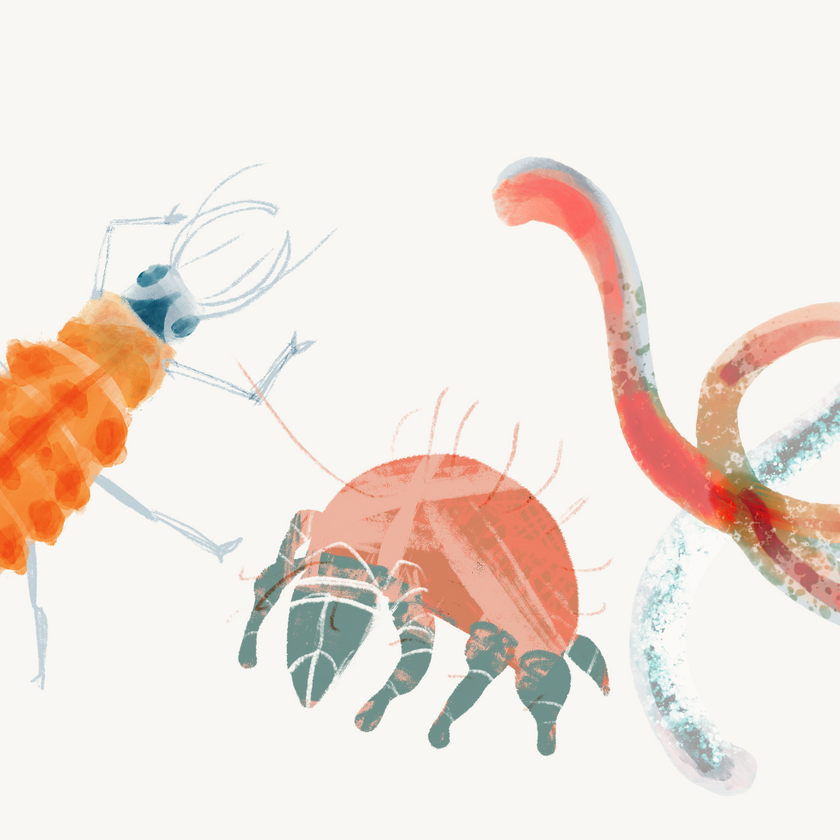When soil temperatures rise, the grubs come closer to the Earth's surface. From that moment on they start feeding on the roots of crops and/or plants. When there are high numbers of grubs in the ground, they can even cause oak trees to fall.
Balance the soil more to prevent outbreaks in the garden! You can read how to do that below:
What are grubs and why are they a problem?
Engerlingen is a collective name for various beetle larvae. For the most part, the different types of grubs look alike and can be recognized by a curved body, a brownish head and three pairs of legs on the front part of their body.
The grubs pose a problem because, as mentioned earlier, they gnaw on the roots of crops and/or plants. But also mainly because of their lifespan. Grubs live underground for three to five years. In the event of a serious infestation, plants or grasses do not have a chance to recover, causing them to yellow or die.

Bring back the balance by using the natural enemy, Phora
Phora is a microscopic nematode that occurs in Dutch nature. These beneficial nematodes are specialized in infecting grubs. They proactively search for their prey. They enter through natural openings. There they secrete a bacterium that kills the grub within 2 to 3 days. New nematodes are produced in the grubs, which continues the nematode process.
The best time to use Phora nematodes
Phora is most effective when the grubs are still small. For that reason it is important to provide the soil with nematodes every year. The beetles lay eggs in the soil from June to September. For preventive control, it is advisable to use Phora in July and the end of October.If you have already spotted grubs in the ground, you can immediately start with the nematodes. Repeat the treatment after 4 to 6 weeks and repeat this throughout the summer. In the following season you fight the grubs preventively.
NB: Phora is the most effective nematode against grubs compared to its peers, such as Felti or Carpo.
A requirement for using Phora is that the soil temperature is around or above 19 degrees for the best results.
Ready to restore balance to the soil? Order Phora now:
Nematodes against grubs | Insect Heroes
Good luck with the fight!

















































